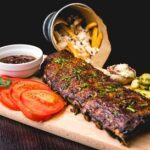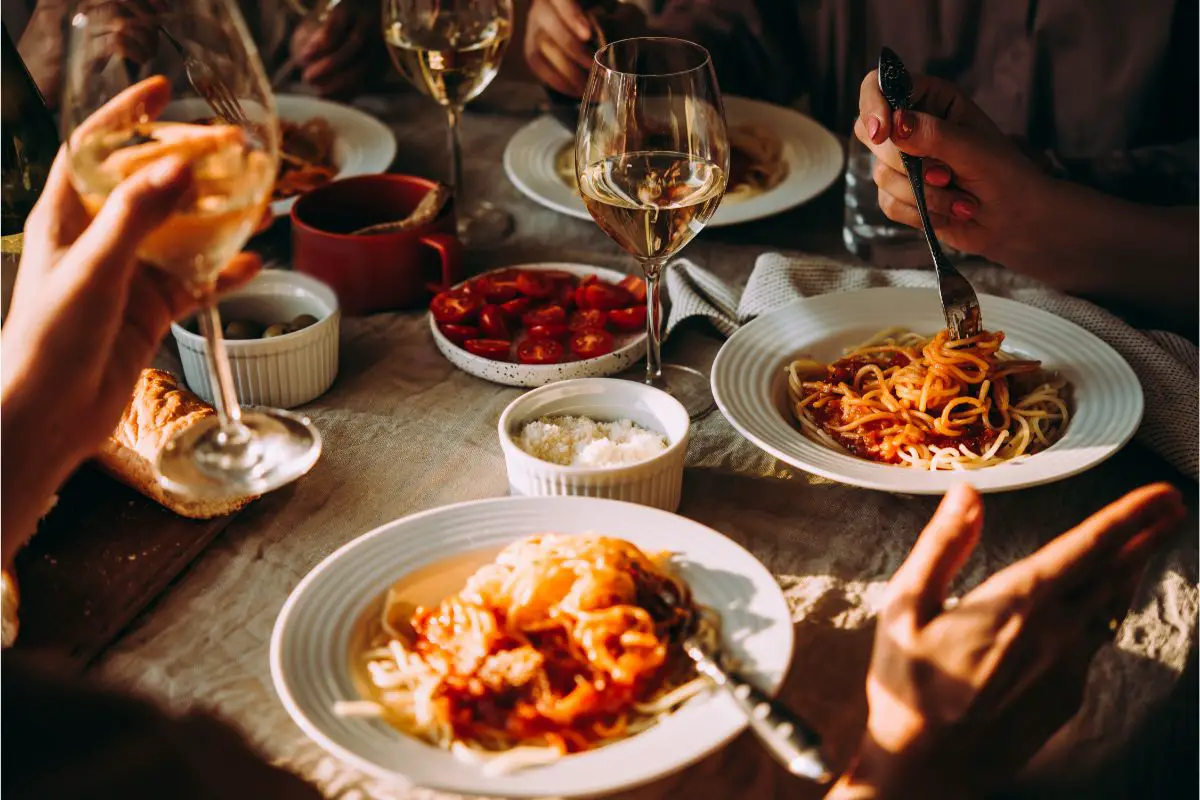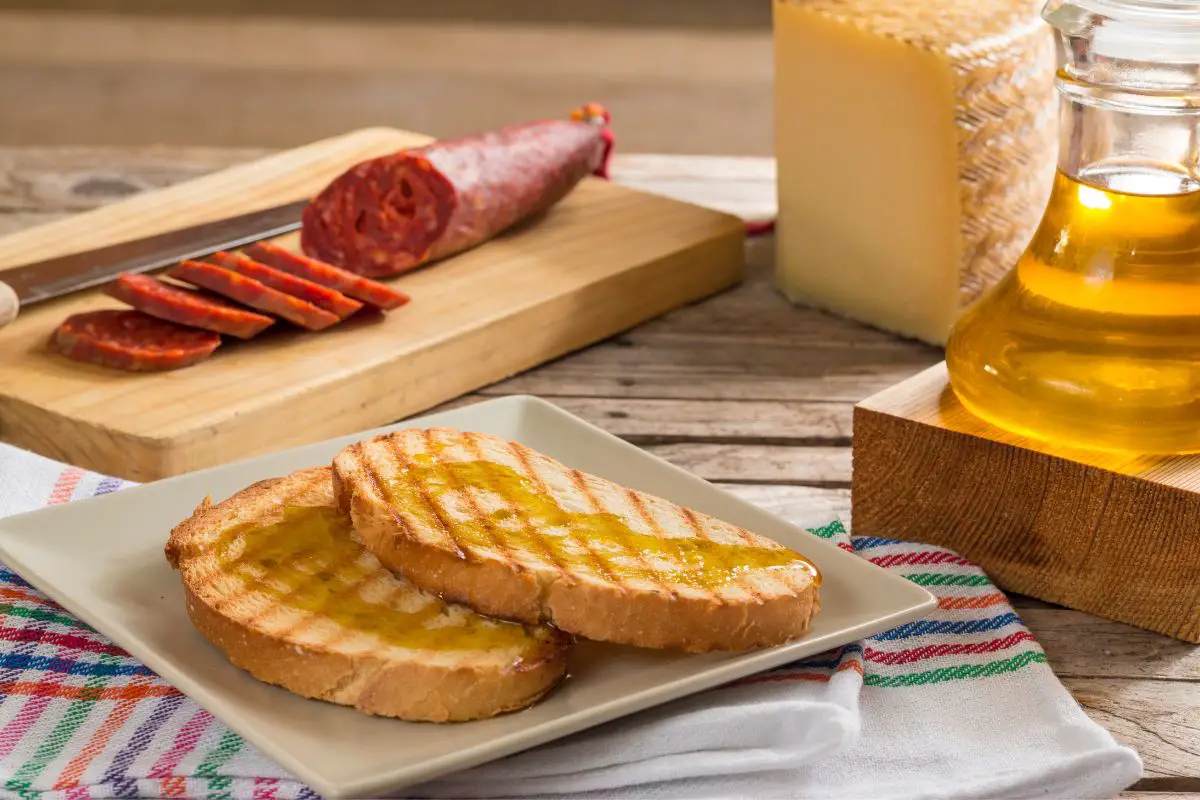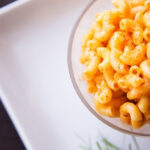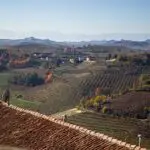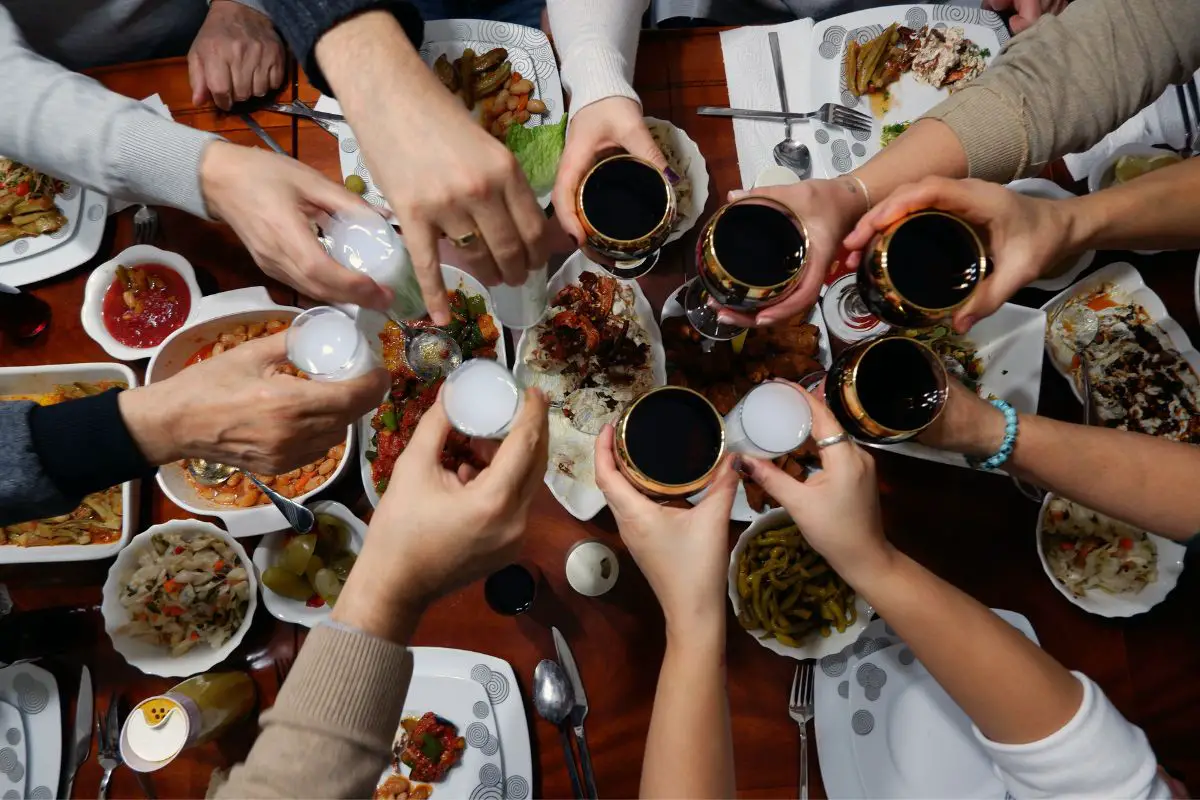Lunch in Spain differs from what we’re used to in the United States. The huge noon meal, known as la comida, consists of many courses, each with five or six options.
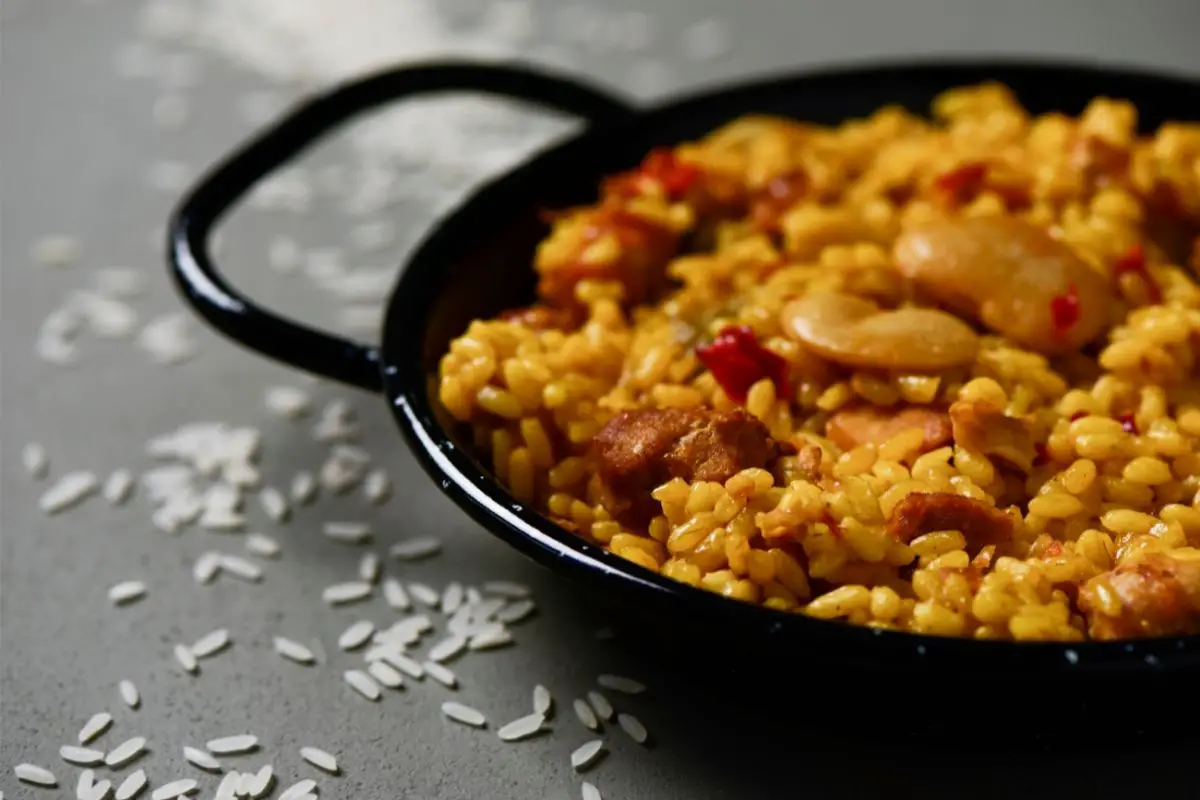
Traditionally, Spaniards do not eat “special” dishes on a regular basis, although they do appreciate a soup, salad, pasta dish, meat and/or fish, and a dessert, such as cheese or fruit.
While most European countries eat about 12pm, lunch in Spain is much later, usually between 2 and 3pm.
Lunch in major Spanish cities is usually one hour long because people do not travel back home.
However, in the suburbs, people may return home or close down for siesta, extending their lunch break to 3-4 hours.
Appetizers
Appetizers, or entrantes as they are known in Spain, are basic appetizers served to begin the dinner, such as a plate of Serrano ham, cheese, or other popular cured meats and cheeses.
Rabas
Rabas is fried squid and is the Cantabrian coast’s signature seafood tapa. This dish is best enjoyed when gently seasoned with salt and drizzled with fresh lemon juice.
It is made with sliced squid strips or rings that are breaded or lightly battered before being fried to crispy perfection.
Croquetas de Jamón
These are tiny and distinctive Spanish fritters with a crispy outer shell and a creamy inside (Check out Why Is a Spanish Diet So Healthy?).
They use a thick version of buttery béchamel sauce as the main component, which is molded into little logs, covered in breadcrumbs and egg wash, and fried till golden and crispy.
Gazpacho
Gazpacho is a cold soup made of crushed tomatoes, finely sliced cucumbers, peppers, onions, croutons, and olive oil, vinegar and is ideal for a hot summer day.
With the same degree of recognition as paella among global customers, the soup’s refreshing, chilly, and acidic qualities promote the best of Spanish cuisine.
Main Course
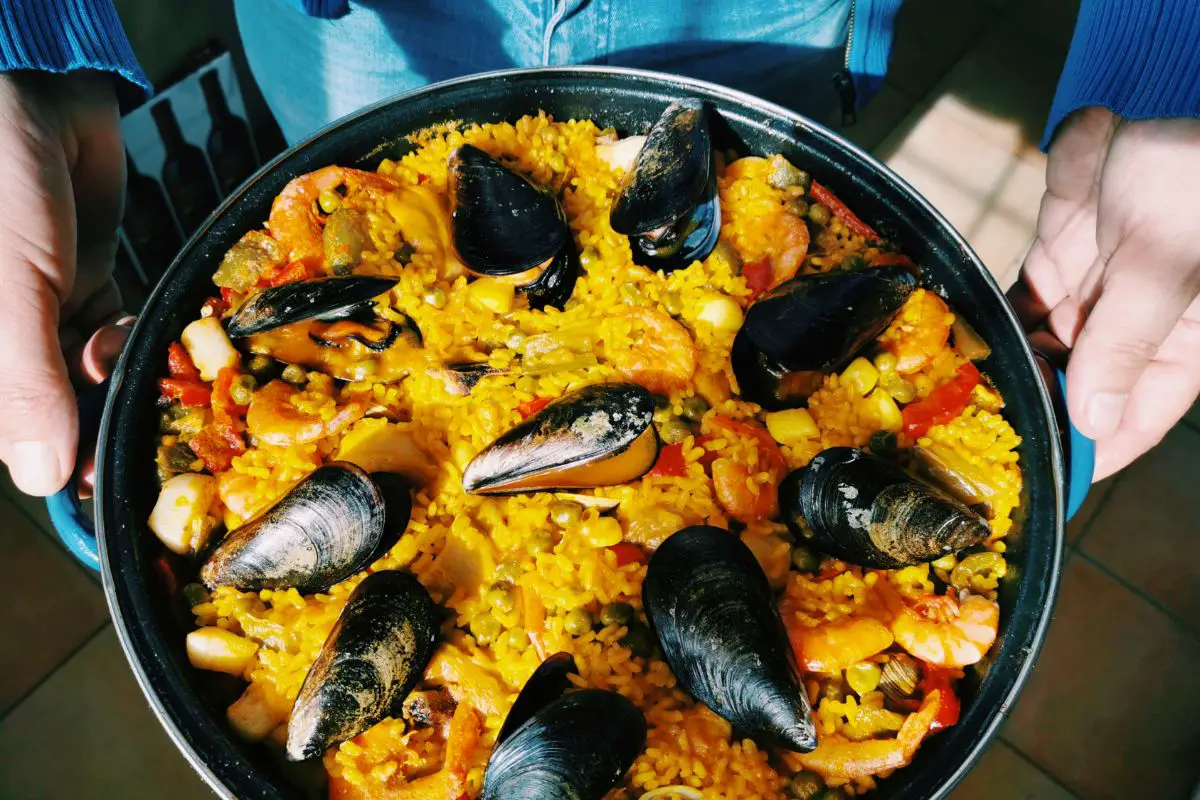
The following course may be clams or shrimp with sauce or rice, or baked or grilled fish.
The Spanish adore all kinds of seafood and want it to be fresh, no matter how far they live from the shore.
In addition to fish, the main course may include any of the following meats: beef fillets, filet mignon, steak, roast lamb, pork loin, or roast suckling pig.
El Cocido
Cocido is a dish that represents Madrid. This stew is composed with chickpeas, carrots, sausage, and other optional ingredients.
Originally, because it can be quickly cooked with inexpensive materials, this dish was popular among the lower classes.
However, it was eventually included in restaurant menus, and the upper class began to consume it as well.
The typical way to serve this dish is to separate the broth generated from heating the items together and serve it as a soup first, followed by the veggies and chickpeas, and then the meat.
Paella
You’ve probably heard of paella, one of the most renowned Spanish meals.
This cuisine is well-known not just in Spain, but all across the world. Serve this rice dish with a variety of veggies, fish, and poultry.
In Spain, fish is often used in this meal, but if you don’t like shellfish, order it with chicken instead, and if you’re vegetarian or vegan, request your paella with only veggies.
Migas
Migas translates to “crumbs” in English. This lunch from Spain may appear to be a simple platter, but it is rather filling.
Migas are frequently created from leftovers from other dishes; as a result, this plate was traditionally made by the lower classes.
Now that the situation has changed, everyone eats migas. Furthermore, because there are so many distinct migas recipes, no one knows which one is the original.
Dessert
It may be difficult to think of dessert after all of this food, but with so many enticing alternatives, you’ll want to make room.
Dessert usually consists of fresh, seasonal fruit, such as peaches in red wine, flan, various forms of ice cream cakes, or ice cream on its own. At the same time, espresso coffee will be available.
Drinks
It’s reasonable to assume that alcohol is an integral part of the Spanish way of life.
Indeed, 60% of people claim they go out to a bar, café, or restaurant at least once a week to drink with friends, family, or coworkers.
As a result, it should come as no surprise that modest amounts of wine and beer are an essential element of Spain’s social life and local Mediterranean cuisine.
Along with alcohol, coffee is, as you might expect, an important element of daily life in Spain.
Many Spanish people begin their days with a drink made with a 1:1 mixture of coffee and scalded milk.
Those who live in Spain frequently have many cups of coffee throughout the day.
Wine
Whether you are dining alone or with a companion, a carafe of wine or water is frequently the usual serving size in restaurants.
Therefore, purchasing wine for both of you will likely result in a carafe to share; yet, if you’re really fortunate, ordering one wine and one water might result in a full serving of both.
Beer
Despite the fact that the craft beer market in Spain is fast developing, you’re unlikely to find much more than a house lager at most places.
Spanish beer is often light and highly carbonated, and is used as a lubricant to help you get through the sticky, stifling heat of summer.
Coffee
Coffee is a huge thing in Spain. Many Spaniards consume multiple cups of their preferred caffeinated beverage in a single day.
Coffee is usually offered after the dessert course of a Spanish meal. To blend in, order a coffee with milk, a coffee without milk, or a coffee with some milk.
Summary
The most significant Spanish mealtimes, in my opinion, should not be missed.
In many locations, lunch is simply referred to as “the meal,” as if it were the only meal that truly qualified as food. Lunch is such a huge issue in Spain.
Lunchtime in Spain is a culinary wonderland. Around 1:30 p.m., the majority of restaurants open for lunch, and around 2 p.m., the people begin to arrive.
As friends and family continue to chat long after the dinner is finished, a practice known as sobremesa, tables will frequently remain full on the weekends until well after 4:30.
When lunch time rolls around in Spain, you just know that you are in for a treat of appetizers, soups, fish, meat, and desserts.
All washed down with delectable coffee and refreshing wine or beer.
- The Top Restaurants Specializing in Truffle Dishes - August 10, 2023
- Truffle Panna Cotta: A Decadent Dessert Recipe for Truffle Lovers - August 7, 2023
- Truffle Scrambled Eggs: A Luxurious Breakfast Delight - August 7, 2023

